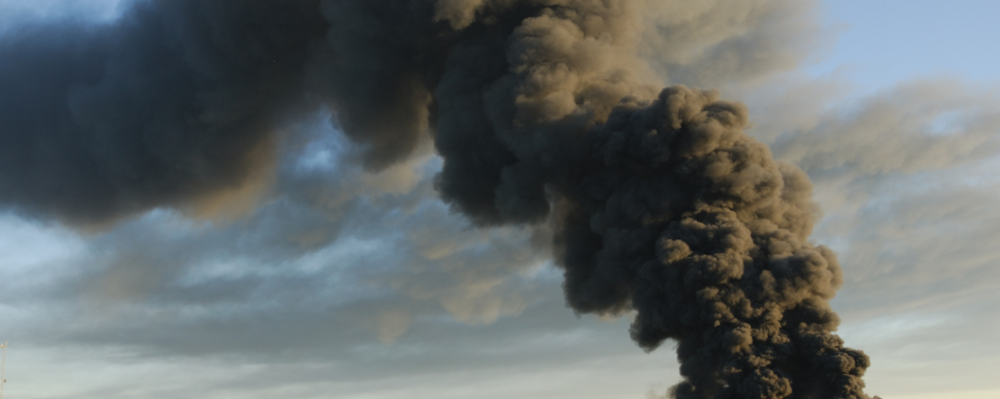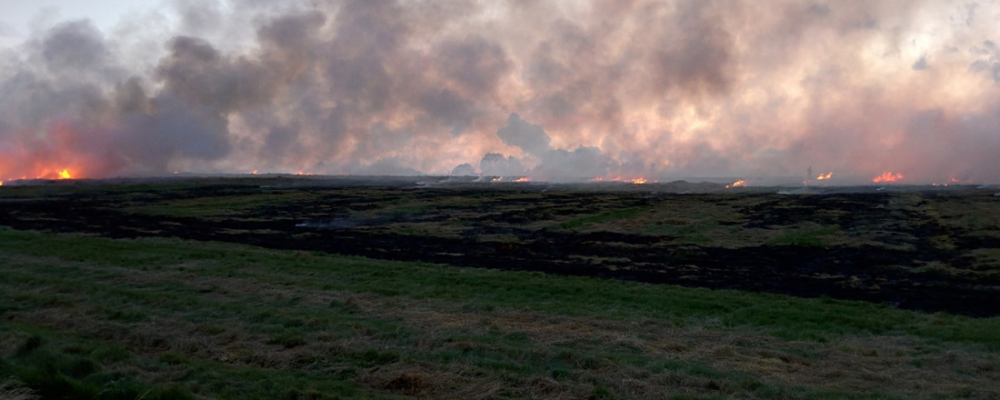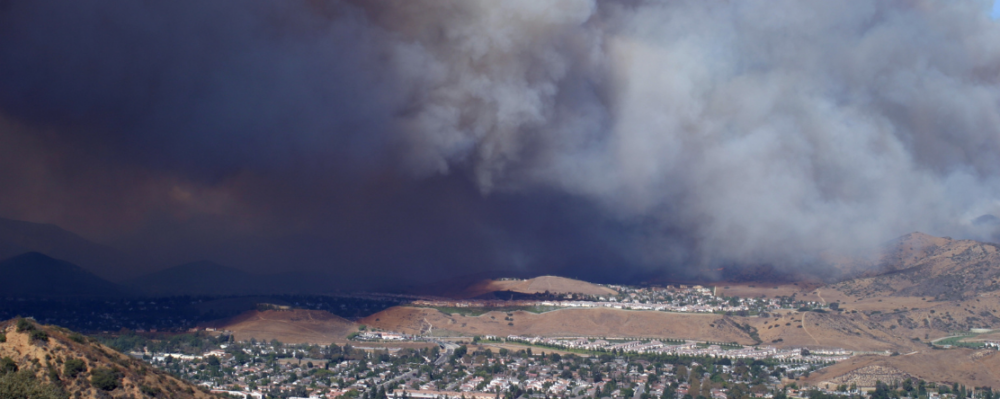
Fact Sheets: Preparing for Wildfire Smoke Events
-
Focus Areas
Chronic Disease Prevention, Environmental Health -
Issues
Asthma, Climate Change, Wildfires & Extreme Heat -
Programs
Regional Asthma Management and Prevention Program
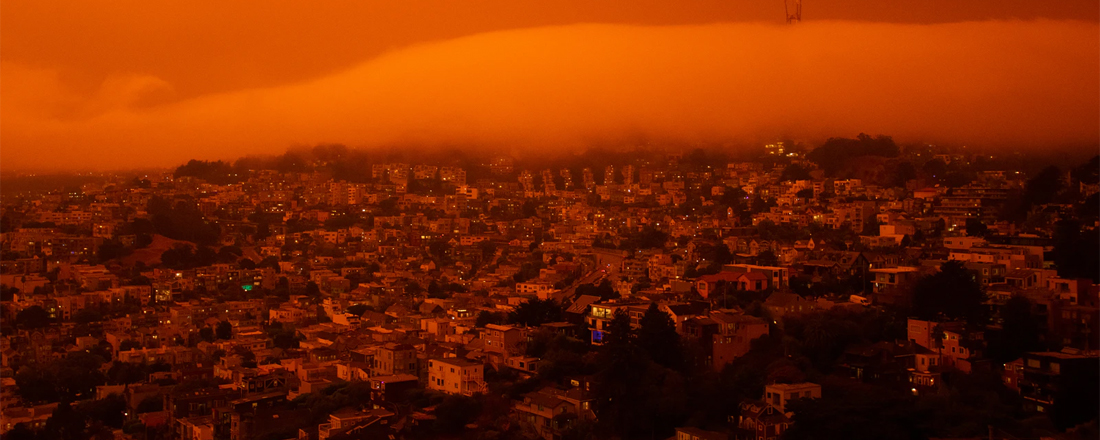
Wildfires create a complex mixture of unhealthy air pollutants that can be especially dangerous for kids and people with asthma. Find resources and tips to help families and educators prepare for wildfire smoke events, with fact sheets created by PHI’s Regional Asthma Management and Prevention program (RAMP) and partners.
This page includes the following resources:
- Protecting Kids from Wildfire Smoke: Actions for Schools
- Helping Clients with Asthma Prepare for Wildfire Smoke Events: Tips for Asthma Educators
Protecting Kids from Wildfire Smoke: Actions for Schools
As researchers uncover greater health consequences of wildfire smoke exposure, especially in youth, schools in California and beyond are being called on to adapt, improving infrastructure to protect kids against this and other impending climate impacts on health. Partners from across the state, including Stanford University and PHI’s RAMP, produced this fact sheet in late 2021 to support schools in taking action now to prepare for future wildfire seasons.
How schools can minimize exposure to harmful smoke and pollutants:
Don’t just close.
When schools close due to wildfire smoke, kids—especially from lower-income communities and communities of color—are set back. Kids could be left without access to learning resources, meals, or school support services. Schools, particularly those with improved filtration, may also have better air quality than many homes. Learning loss and lost school days are a growing problem in California—and can affect kids’ health and wellbeing throughout the rest of their lives. In the face of intensifying wildfires, as well as future pandemics and the growing health impacts of climate change, schools need to help protect kids—including the most vulnerable among them.
Know your indoor air quality
Monitoring indoor air quality is an important way to tailor interventions and keep kids safe. Ideally, this should also be done at home. More information: bit.ly/3wyg3tP
Improve HVAC systems
Installing, improving, and maintaining HVAC systems is critical for mitigating exposure to smoke—as well as other emerging challenges, like disease-spreading pathogens and heat. Use MERV13+ filters or highest possible filter
compatible with system. More information: bit.ly/3Czx7SS
Get air purifiers
Where HVAC installation isn’t an option or additional filtration is needed, classrooms should get portable mechanical air cleaners. Avoid purchasing purifiers that have ionizers, as they can create ozone. More information on devices certified for sale in CA: bit.ly/37zwrhU
Create clean air rooms
Schools should consider creating large clean air rooms, such as cafeterias, gyms, or auditoriums—which can also serve as clean air shelters for community members outside of school hours. Ideally, ALL classrooms should be clean air rooms to keep kids safe. More information: bit.ly/3ykggRt
Conduct a baseline assessment
Conducting a baseline assessment of infrastructure and vulnerabilities, such as a hazard mitigation plan, is important for disaster preparedness and can open up additional funding. More information: bit.ly/3CM0RLH
Follow activity guidelines
Work with local health and air quality officials to understand how to best implement school activity guidelines and other responses to a smoke event. More information: bit.ly/3fRyXof
Have kids wear masks
When there is smoke outside, the best place to be is an indoor space with good air quality. If outdoors for brief periods, consider having kids wear NIOSH-certified N95 masks, especially if kids are coughing or have underlying health concerns. More information: bit.ly/3lThLCP
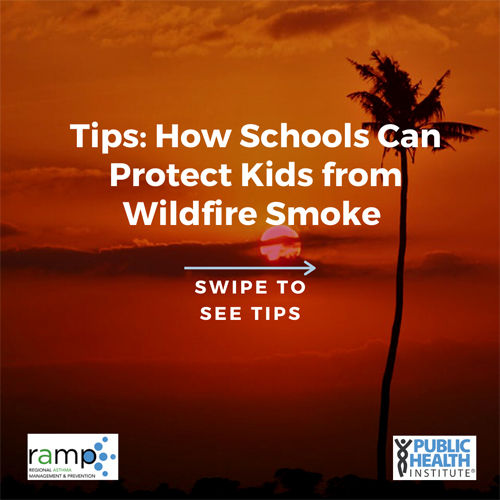
See the Sharable Instagram Slides
View our sharable Instagram slides and swipe through for tips from PHI’s RAMP to learn how schools can protect kids, staff and communities against wildfire smoke and other impending climate impacts on health.
Helping Clients with Asthma Prepare for Wildfire Smoke Events: Tips for Asthma Educators
Designed for asthma educators to use with clients, the resource can also be used by all families and individuals to learn how to minimize exposure to smoke and harmful air pollutants.
Find guidance, tips and resources for asthma educators to help families get ready and stay safe, in this tool from PHI’s Regional Asthma Management and Prevention program (RAMP).
How to help people minimize exposure to smoke and air pollutants:
Help your clients manage their asthma.
- If they are experiencing symptoms, have your clients contact their physician. If they cannot, urge them to follow their asthma action plan and to seek medical care if symptoms are not relieved.
Help your clients create clean indoor spaces in their homes.
- During wildfire smoke events, counsel your clients to keep doors and windows closed, and avoid activities that create more indoor pollution, such as frying foods, sweeping, vacuuming, and using gas-powered appliances.
- Provide your clients with portable HEPA air filtration units certified by the CA Air Resources Board and replacement filters, if possible. If your program isn’t able to purchase them, provide clients with information about purchasing an air filtration unit or creating a do-it-yourself box fan filtration unit.
- If your clients have a central ducted air conditioning and heating system, tell them to set the system to “on” rather than “auto,” so that air is being filtered constantly, and to run it on recirculation mode to prevent outdoor smoke from getting inside. Encourage them to install a high-efficiency filter (MERV 13 rating or higher), if possible.
Help your clients decrease exposure to wildfire smoke if they must be outside.
- Encourage your clients to track the Air Quality Index (AQI) in their local area through AirNOW. An AQI level greater than 100 is ‘Unhealthy for Sensitive Groups’ and greater than 150 is ‘Unhealthy’ for all people.
- If your clients must be outside during unhealthy conditions, encourage them to wear an N-95 mask that can filter out damaging fine particles. Cloth face coverings (like those for COVID) do not reliably filter out small smoke particles.
- Remind your clients that they shouldn’t participate in extra outdoor activities (like playing sports) whether or not they are wearing a mask. Masks can help people breathe less smoke, but they still breathe some smoke, especially if they are being active. They may want to look at guidelines for school activities, which could serve as a good reference when making decisions about personal activities outside.
Encourage your clients to stay safe in extreme heat.
- If they don’t have an air conditioner, or they lose power, staying inside with the windows closed may be dangerous in extremely hot weather. In these cases, they should seek alternative shelter such as a community cooling center.
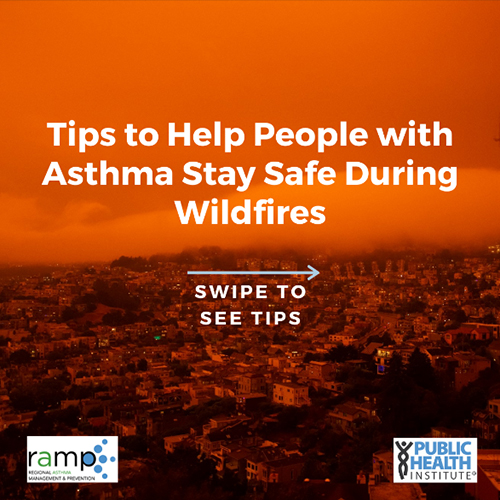
See the Sharable Instagram Slides
View our sharable Instagram slides and swipe through for tips from PHI’s RAMP for guidance on how people with asthma can prepare and stay safe during wildfire season. Designed for asthma educators to use with clients, this resource can also be used by all families and individuals to learn how to minimize exposure to smoke and harmful air pollutants.
Check out RAMP’s webpage about Wildfire Smoke and Asthma, where new resources including webinar presentations are added regularly.
Work With Us
You change the world. We do the rest. Explore fiscal sponsorship at PHI.
Support Us
Together, we can accelerate our response to public health’s most critical issues.
Find Employment
Begin your career at the Public Health Institute.
